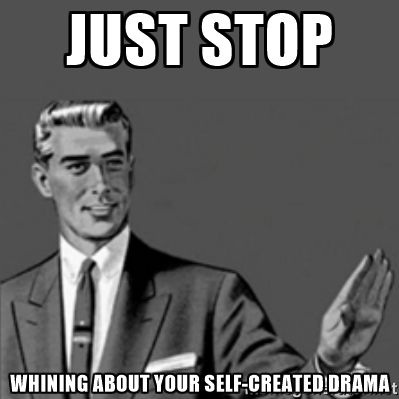The Narrowing Trade Deficit Helped GDP Expand At An Annual Rate Of 2.6 Percent
U.S. economy grows in third quarter, reversing a six-month slump.
The report on gross domestic product, released Thursday by the Bureau of Economic Analysis, revealed a more upbeat snapshot of the economy less than two weeks before the midterm elections, even as high inflation has proved a persistent problem for Democrats.
“The irony is, we’re seeing the strongest growth of the year when things are actually slowing,” said Diane Swonk, chief economist at KPMG. “There are some real cracks in the foundation. Housing is contracting. The consumer is slowing. GDP is growing, but not for all of the right reasons.”
Even though consumers bought fewer goods, they continued to spend on health care, which helped lift the reading on GDP, which sums up goods and services produced in the U.S. economy. An increase in government spending at the federal, state and local levels also contributed to the gains.
The biggest boost, though, came from a narrowing trade deficit, with American retailers importing fewer items and exporting more goods as well as services, such as travel. That is a stark reversal from earlier in the year, when the gap between incoming goods and outgoing ones was at its widest on record.
Trade-related benefits, though, are likely to be short-lived. Economists widely expect GDP growth to slow in the coming months as consumers and businesses continue pulling back in the face of the Fed raising interest rates and uncertainty. By next year, many are forecasting a more protracted slump and perhaps even a recession.
On Thursday, President Biden lauded the positive GDP report while acknowledging that inflation remains a problem.
“Today we got further evidence that our economic recovery is continuing to power forward,” Biden said in a statement. “Our economy has created 10 million jobs, unemployment is at a 50 year low, and U.S. manufacturing is booming … Now, we need to make more progress on our top economic challenge: bringing down high prices for American families.”
Republican lawmakers, still praying for recession, were quick to push back. Economic growth, they said, was “fleeting” and likely to reverse in coming months.
“Key drivers of the economy such as investment and consumer spending shrunk again,” Rep. Kevin Brady (Tex.), the top Republican on the House Ways and Means Committee, said in a statement. “These are alarming red flags for the current stagnant economy, signaling the worst is yet to come.”
Biden touts plunging deficit as GOP prepares for spending fights
Consumer spending, which makes up more than two-thirds of the economy, grew at a slower pace in the most recent quarter. Although Americans continued to see wage increases, their savings took a hit, as families tried to keep up with decades-high inflation. Overall prices have risen 8.2 percent in the past year, though the cost of many necessities, including food and gas, has grown at much higher rates.
Other head winds included a slowdown in the housing market and a decrease in retail sales, particularly online.
Real final sales to domestic purchasers, a measure that strips out volatile components such as government spending and trade, grew slightly, at an annual rate of 0.1 percent. That’s down markedly from early in the year, when it rose by 2.1 percent, and shows that underlying economic growth is decelerating.
“We’ve seen very clearly a slowdown in consumer spending over the course of the year,” said John Leer, chief economist at Morning Consult. “There’s been a pretty dramatic reallocation of spending because of elevated levels of inflation. Consumers are devoting a larger share of their wallets to food, gas and housing, while pulling back in other areas.”
The positive report follows two quarters of contraction. That contraction met one definition of a recession, though the official determination is made by a private group of experts. The U.S. economy shrank by 1.6 percent in the first quarter, then 0.6 percent in the second, according to revised estimates from the government.
The rebound in output comes at a time when the Federal Reserve is aggressively raising interest rates in hopes of slowing growth enough to contain decades-high inflation. The central bank has increased borrowing costs five times since March and is expected to do so again next week. The longer the labor market remains tight — and inflation persists — the more the Fed might have to raise rates higher and for longer, raising the chances of a recession.
For now, though, hiring remains brisk and the unemployment rate, at 3.5 percent, is near historic lows. And although consumers are pulling back on some items — such as homes, cars and appliances — they are continuing to spend on travel and dining out, which is helping prop up the economy. Although business owners say they are worried about uncertainties ahead, many say they have yet to notice a marked slowdown in demand.
As the Fed fights inflation, worries rise that it’s overcorrecting
In the early months of the pandemic, Marc Sherman was not sure whether his general stores in Stowe, Vt., would survive. But ever since tourism picked back up, business at Stowe Mercantile has been booming. Sherman has hired two more employees in the past month because sales have been so strong.
Now he’s hoping that momentum carries through the holidays and ski season, through the quieter months of the winter and spring — and ultimately through rising fears of a recession. His plan is to retain as much staff as possible, even when tourism ebbs, so he does not have to find and retrain new staffers going into the summer.
“Our revenue is strong as ever, and we have a solid staff, so the increased revenue supports increasing all those wages,” Sherman said. “At the same time, we’ve seen no real slowdown. The drumbeat for a recession seems to get louder by the week, and yet we aren’t seeing anything in our business.”

